Top 11 Interesting Facts about Herbert Hoover
The Best Humanitarian Henry Hoover is well recognized for his work providing aid to the victims of World War I. Herbert Clark Hoover presided over the United ... read more...States as its 31st president from 1929 to 1933. Economic catastrophes like the Great Depression and the 1929 Stock Market Crash engulfed the nation while he was president. Hoover served as the third US Secretary of Commerce in addition to being a successful mining engineer, businessman, and director of the United States Food Administration (USFA) before becoming president. Check out the interesting facts about Herbert Hoover listed below to learn more about him.
-
In West Branch, Iowa, a little prairie hamlet of only 265 inhabitants, Herbert Hoover was born on August 10, 1874, in a two-room, whitewashed house erected by his father, which is one of the interesting facts about Herbert Hoover. Jesse Clark Hoover was the father of Herbert Hoover, a Quaker who worked as a blacksmith and a seller of agricultural equipment in West Branch until his premature death from a heart attack in 1880 when Herbert was just six years old. Hoover, his older brother Theodore, and his younger sister May were orphans after their mother passed away in 1884. Hoover spent the following 18 months at a neighboring farm with his uncle Allen Hoover.
Hoover was moved to Newberg, Oregon, in November 1885 to live with his uncle John Minthorn, a Quaker doctor and merchant, whose own son had passed away the previous year. The Minthorn family was regarded as refined and educated, and they instilled a strong work ethic. Like West Branch, Newberg was a frontier town founded mostly by Quakers from the Midwest. Minthorn made sure Hoover had a good education, but Hoover detested Minthorn for making him do so many tasks. Hoover was a student at Friends Pacific Academy, which is now George Fox University, but left school at the age of thirteen to work as an administrative assistant in Salem for his uncle's real estate company, Oregon Land Company. Hoover studied arithmetic, typing, and bookkeeping at a night school even though he didn't finish high school.
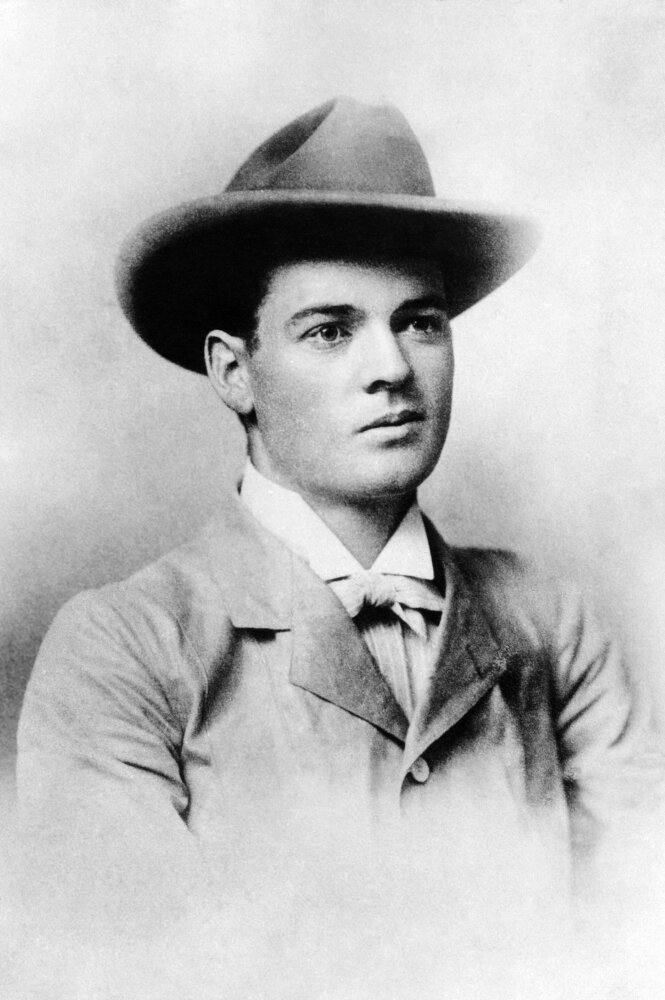
commons.wikimedia.org 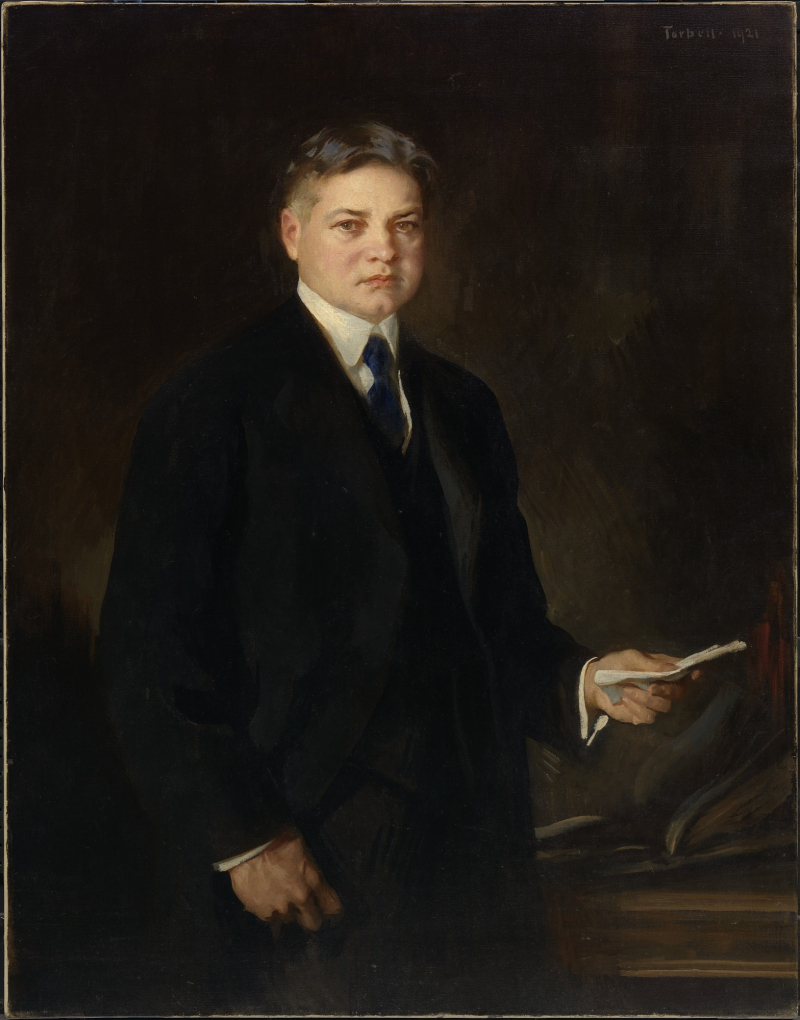
commons.wikimedia.org -
Herbert Hoover was permitted admission to Stanford University in 1891. It's interesting to note that he passed every subject except for mathematics. In other words, except for Math, he failed every Stanford entrance exam. After working with John Casper Branner, the head of Stanford's geology department, during his freshman year, he changed his major from mechanical engineering to geology.
Hoover co-founded "Romero Hall," Stanford's first student housing cooperative, during his second year to cut costs. Hoover began as a mediocre student. He spent the majority of his time working at side jobs or participating in extracurricular activities at school, which suggests that his priorities were off at the time. It's interesting how this path made him well-known around Stanford. Hoover was elected treasurer of the student council, sports team manager, and project coordinator for several significant University events.
He oversaw the football and baseball teams as the student manager, and he assisted in planning the first Big Game against the University of California. Hoover worked as an intern for USGS economic geologist Waldemar Lindgren during the summers before and following his senior year. Hoover was able to have an unexpected influence at Stanford despite having a poor start. These experiences persuaded Hoover to pursue a career in mining geology. Hoover eventually earned a degree in geology with aspirations of working as a mining geologist.
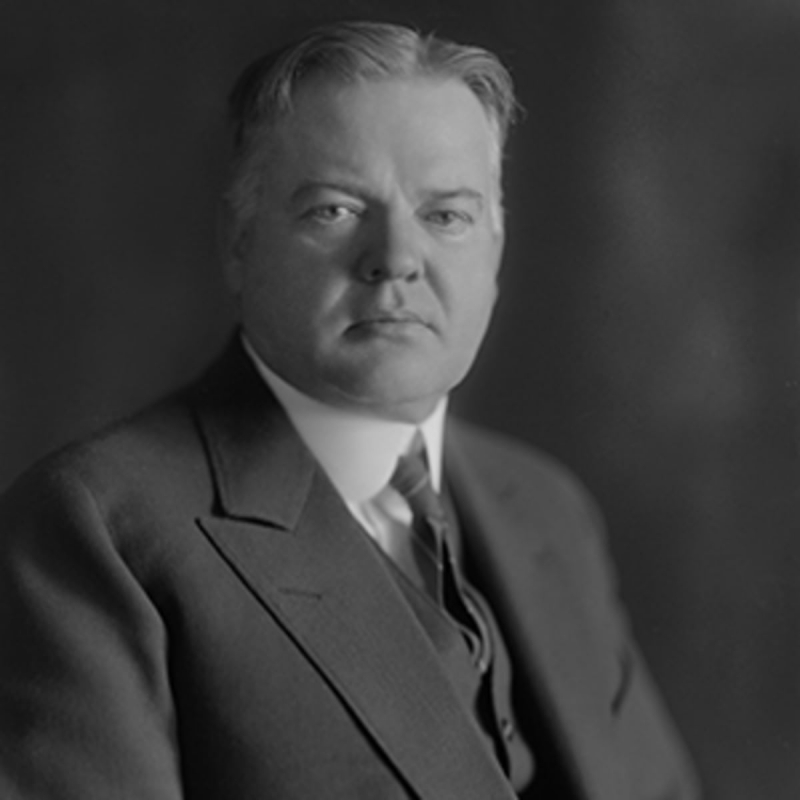
www.washingtonpost.com 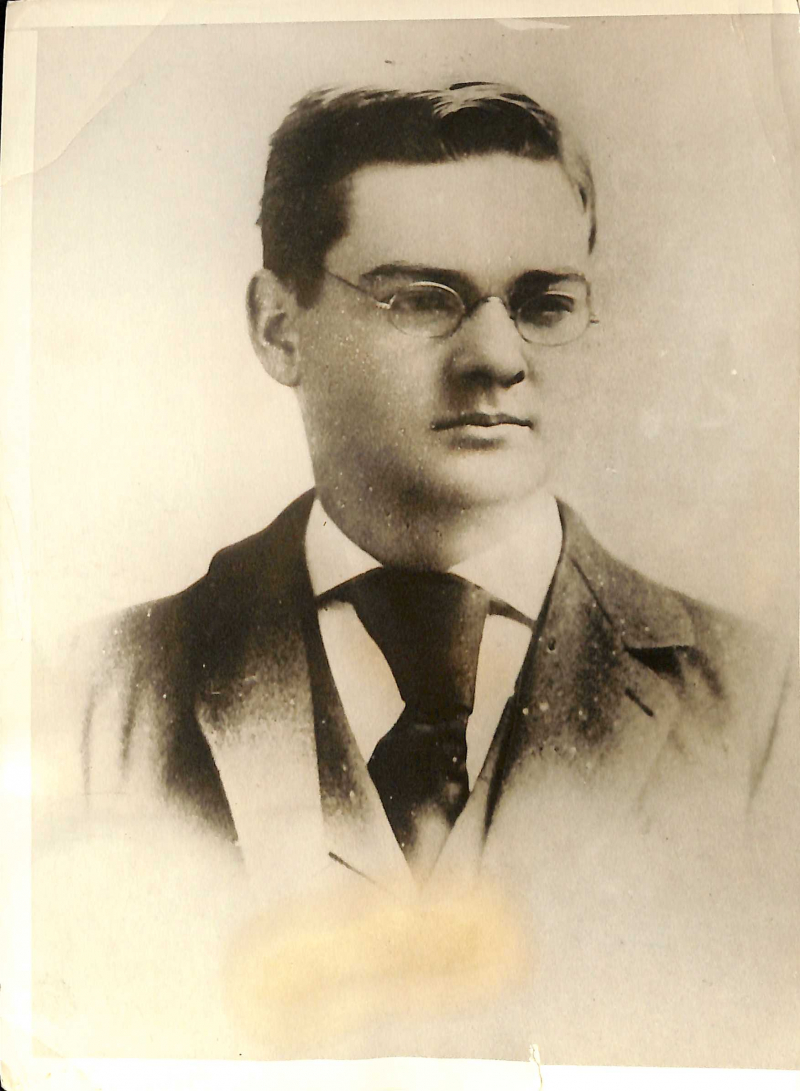
www.washingtonpost.com -
Hoover struggled to get a job at first since the Panic of 1893 was still going on when he graduated from Stanford in 1895. Until he persuaded renowned mining engineer Louis Janin to hire him, he toiled in several low-level mining positions in the Sierra Nevada Mountains, which is one of the interesting facts about Herbert Hoover. Hoover was employed by Bewick, Moreing & Company, a London-based business that ran gold mines in Western Australia, after serving as a mining scout for them for a year. Hoover initially traveled to Coolgardie and then to the Eastern Goldfields' administrative hub. Although Hoover was paid $5,000 (which would be $162,860 in 2021), conditional the goldfields were hard.
Hoover routinely traversed the Outback to assess and oversee the mines owned by the firm. He persuaded Bewick, Moreing & Company to buy the Sons of Gwalia gold mine, which went on to become one of the area's most prosperous mines. Hoover's initiatives helped the business eventually control almost 50% of the gold production in Western Australia. To reduce expenses and combat the labor movement of the Australian miners, Hoover immigrated to a large number of Italians. Hoover developed a dislike for policies like a minimum wage and workers' compensation during his time working for the mining firm because he believed they were unjust to owners. Due to his excellent efforts, Hoover was elevated to junior partner in 1898. However, to resolve the issue between him and his supervisor Ernest Williams, he was finally sent to China.
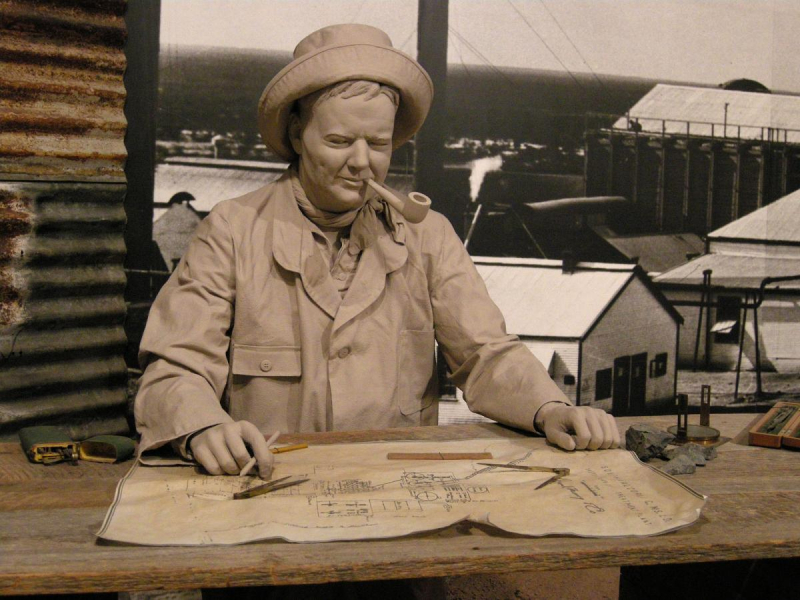
www.thoughtco.com 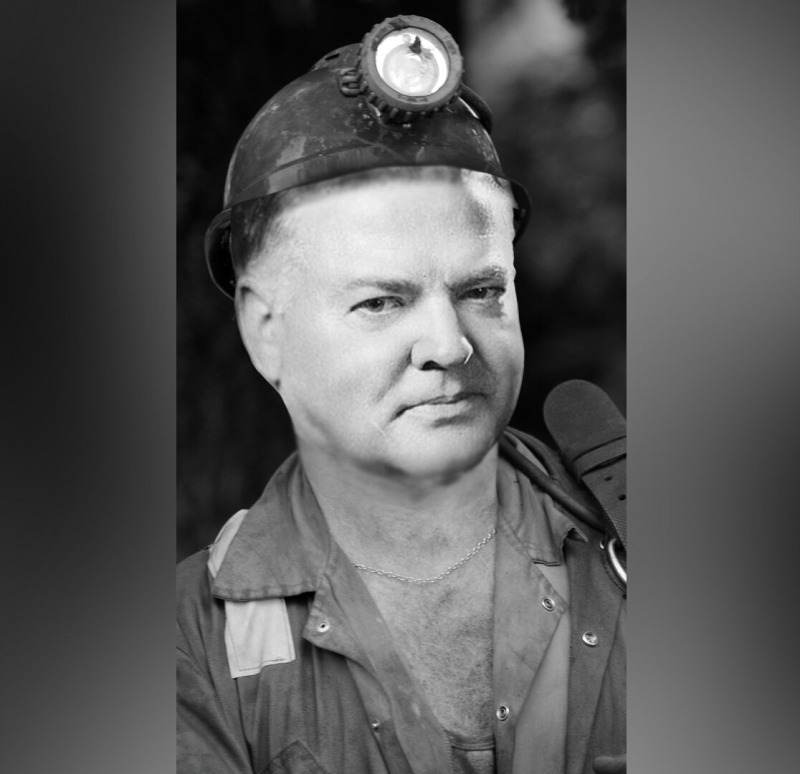
www.thoughtco.com -
After landing in China, Hoover worked with Bewick and the Chinese Engineering and Mining Company to build gold mines close to Tianjin. He had a strong interest in Chinese history but gave up trying to become proficient in the language. He made it known that Chinese laborers were less effective and of a lower race. He offered suggestions to better the situation of Chinese employees, urging an end to the practice of enforcing lengthy servitude contracts and the implementation of merit-based reforms. Shortly after Hoover landed in China, the Boxer Rebellion erupted, detaining the Hoovers and countless other foreigners until the Battle of Tientsin, where a multinational military force routed the Boxer forces.
The director of the Chinese Engineering and Mining Company agreed to form a new Sino-British enterprise with Bewick, Moreing out of concern for the impending collapse of the Chinese government. In late 1901, Hoover joined Bewick, Moreing as an operating partner after establishing effective control over the new Chinese mining firm.
Hoover often traversed the globe as Bewick, Moreing's operational partner, visiting the company's mines in several countries. After one of the partners acknowledged having sold shares in a mine fraudulently, the firm started to experience growing legal and financial problems in December 1902. After the British government established two independent royal commissioners to look into Bewick, Moreing's labor abuses, and financial transactions in Western Australia, more problems emerged in 1904. Hoover started searching for a way out of the partnership when the firm lost a lawsuit, and in the middle of 1908, he sold his interests.
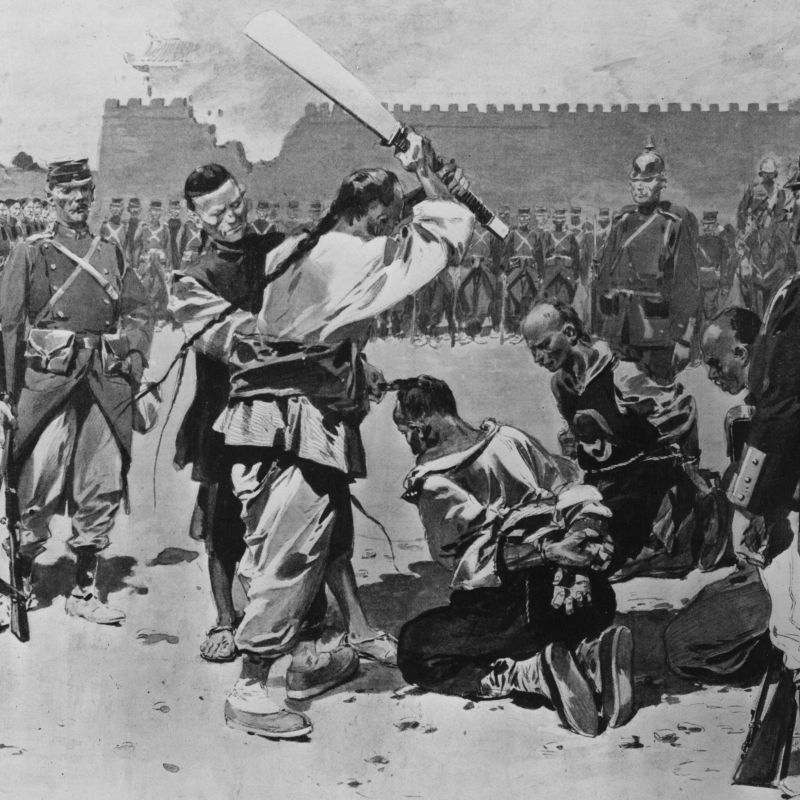
China's Boxer Rebellion - www.thoughtco.com 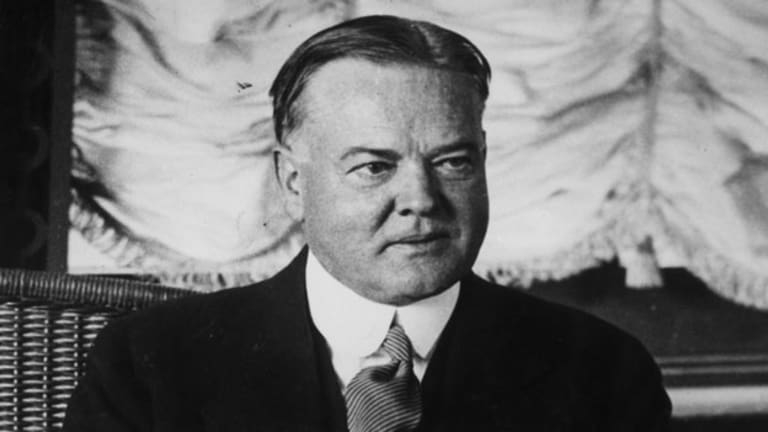
totallyhistory.com -
Following his departure from Bewick Moreing, Hoover worked as an independent mining consultant and investor in London. Hoover spent a lot of time raising money, reorganizing company structures, and funding new initiatives despite having achieved fame as a geologist and mine operator. He specialized in turning around struggling mining businesses in return for a cut of the earnings for his technical and financial know-how. Hoover had a reputation as a "doctor of sick mines" and saw himself and his colleagues as "engineering doctors to sick concerns." He maintained offices in San Francisco, London, New York City, Paris, Petrograd, and Mandalay, British Burma, and he made investments across all continents. Hoover had an estimated personal fortune of $4 million by 1914, which is comparable to $108.21 million in 2021.
To harvest zinc close to the Australian city of Broken Hill, New South Wales, he co-founded the Zinc Corporation. The Zinc Corporation ran the first selective ore differential flotation facility in the world and created the froth flotation method to recover zinc from lead-silver ore. Hoover collaborated with the British company Burma Corporation, which operated the Namtu Bawdwin Mine and generated significant amounts of silver, lead, and zinc. He also promoted the use of pyritic smelting to boost copper output in Kyshtym, Russia. A second mine in the Altai Mountains that, in Hoover's words, "produced possibly the biggest and richest single deposit of ore known in the world" was another commitment he made.
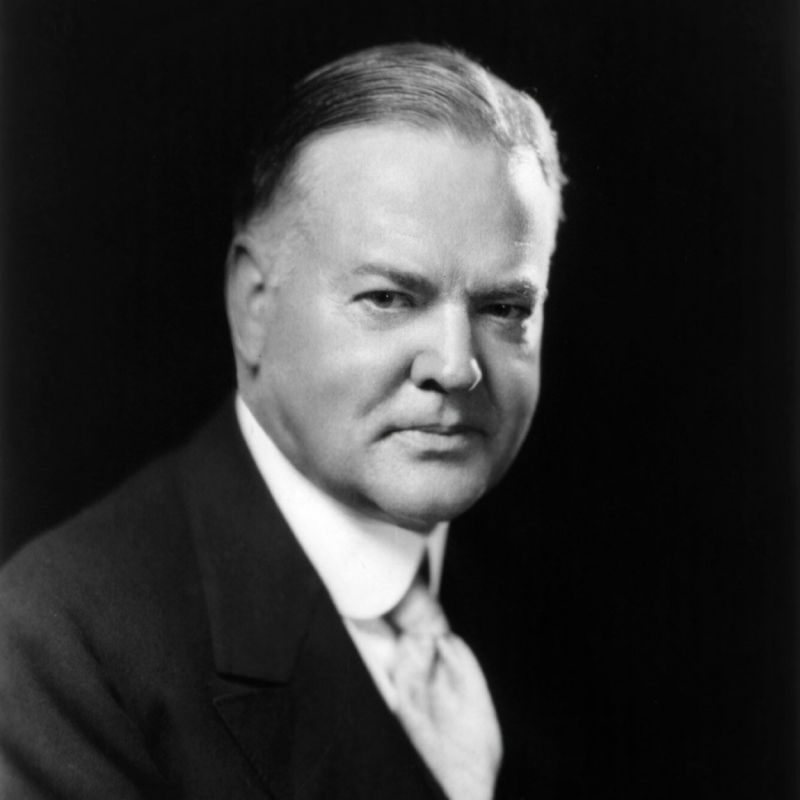
totallyhistory.com 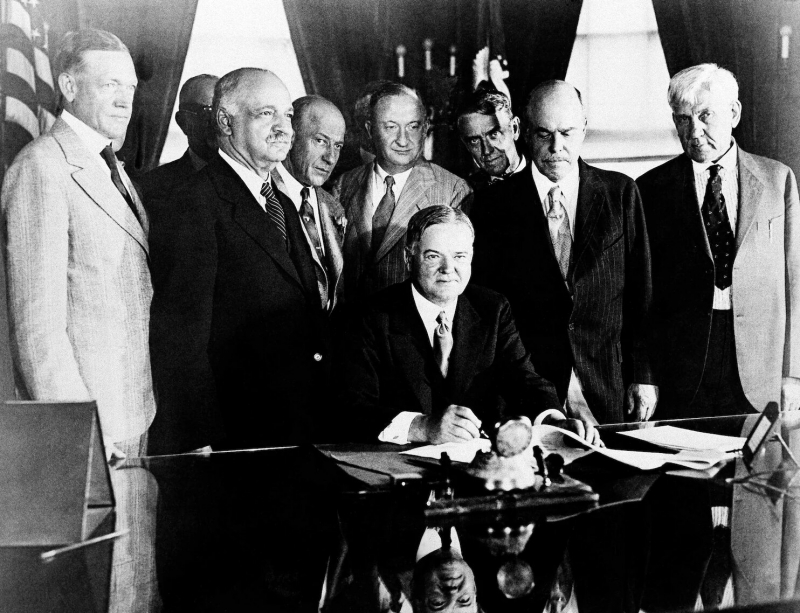
totallyhistory.com -
In his free time, Herbert Hoover gave lectures at Stanford University and Columbia University. He was able to compile his lectures into Principles of Mining, which was published in 1909. Along with capturing his knowledge and experience, the stated textbook also served as an example of Hoover's progressive ideas. Principles of Mining eventually become the required reading for several institutions.
De re Metallica or On the Nature of Metals was translated into English by Hoover and published the same year, in 1912. This is a Latin-language book by Georg Bauer that describes the techniques for mining, refining, and smelting metals. Though Hoover's efforts, On the Nature of Metals, rose to prominence in the fields of Chemistry and other academic fields.
Along with giving lectures and writing books, Hoover joined the Board of Trustees at Stanford. He oversaw a campaign there that was successful in getting John Branner selected as the school's president.
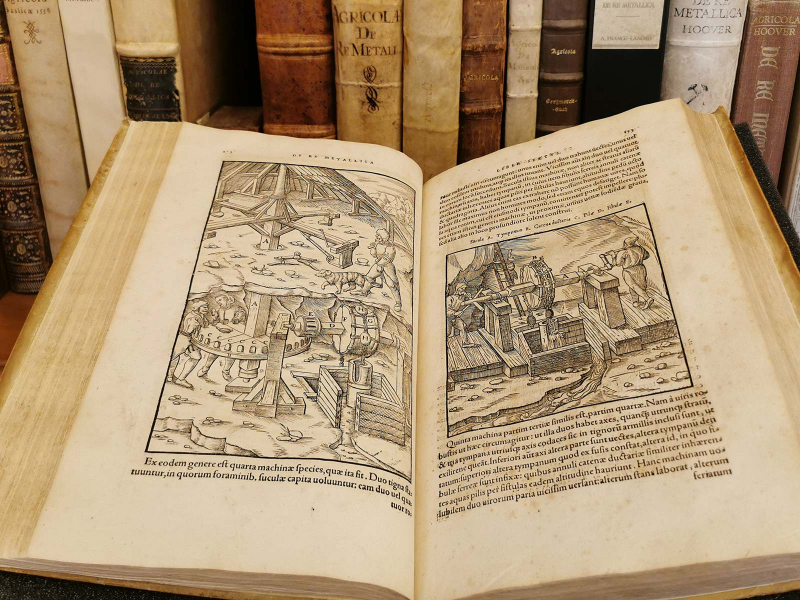
De re Metallica or On the Nature of Metals - www.goldfieldsguide.com.au 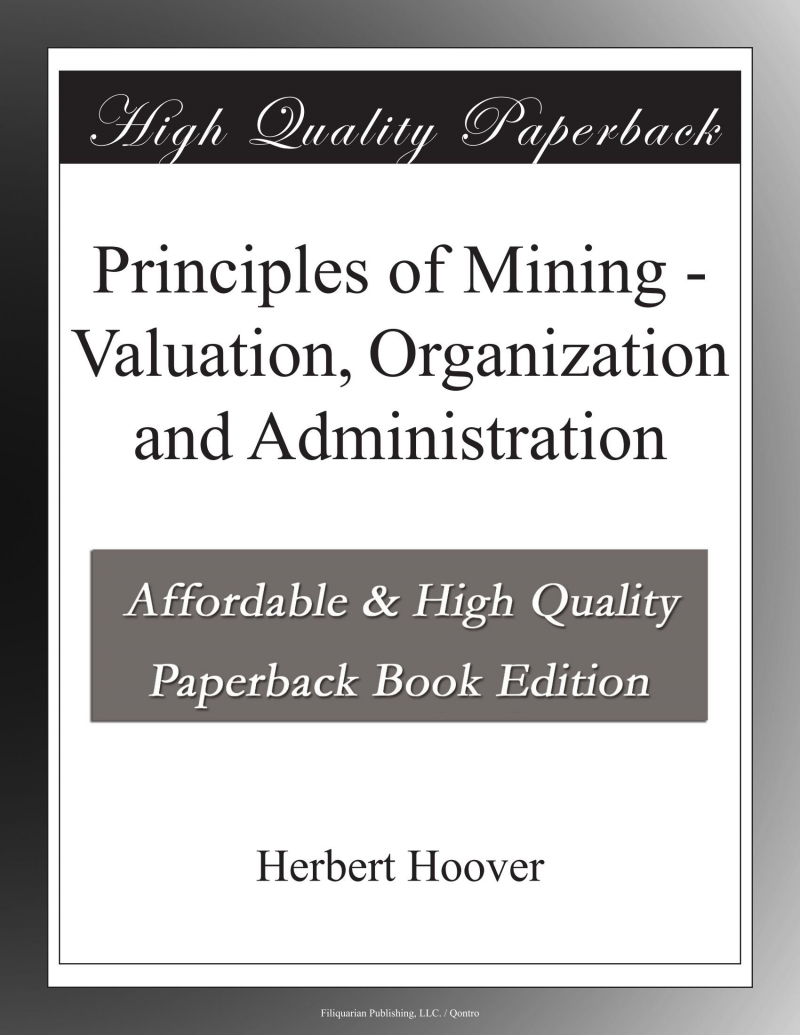
Principles of Mining- amazon.com -
When World War I started, the Hoover family was residing in London. Hoover subsequently reflected on how the conflict in Europe affected his life, saying, "I did not understand it at the time, but on August 3, 1914, my engineering career was gone for good. I was on the slick path of public life". After becoming Chairman of the Commission for Relief in Belgium, which raised millions of dollars and provided food, medicine, and supplies for more than 9 million Belgian and French citizens after Germany invaded, he arranged the evacuation of 120,000 Americans trapped in war-torn Europe in six weeks, which is one of the interesting facts about Herbert Hoover.
To assist save the American resources required for the war effort, President Woodrow Wilson selected Hoover to lead the U.S. Food Administration in 1917. He became well-known because of the verb "Hooverize" which Americans use to denote limiting consumer items. After the war ended in 1918, Wilson appointed Hoover to lead the American Relief Administration, and with his assistance, 34 million tons of food, clothes, and supplies were sent to Europe. In 1921, he also sent relief to Russia, which was suffering from a famine, and blasted a critic by stating, "Twenty million people are hungry. Regardless of their politics, people need to eat.
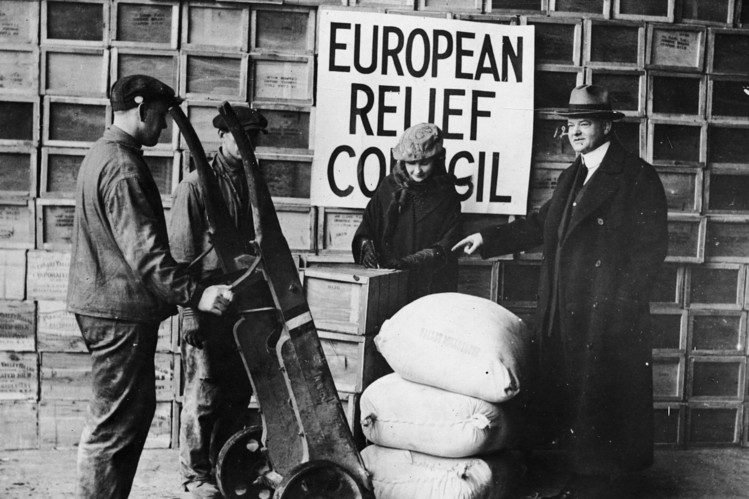
www.wfpusa.org 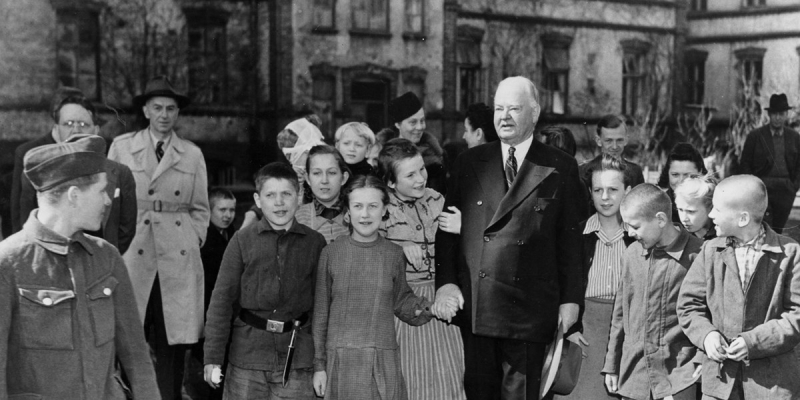
www.wfpusa.org -
Hoover was shown live in the first American television demonstration on April 7, 1927, while serving as secretary of commerce under President Calvin Coolidge. Hoover became the first person to appear on a long-distance TV broadcast when this moving picture was transmitted more than 200 miles away to Whippany, New Jersey, and then on to the AT&T offices in Manhattan. Hoover started to a group of journalists and dignitaries in New York City through a connection that stretched from Washington, D.C. that "now we have, in a sense, the transmission of sight for the first time in the history of the globe."
It was as if an image had come to life and started to talk, grin, nod its head, and glance in this direction and that, according to a New York Times report. In retrospect, the entrance of vaudeville comic A. Dolan, who first performed in blackface after changing quickly from his Irish-American stereotype costume, tainted the show. Hoover, on the other hand, made a statement on the event's significance for science, telling reporters that "human brilliance has now abolished the hindrance of distance."
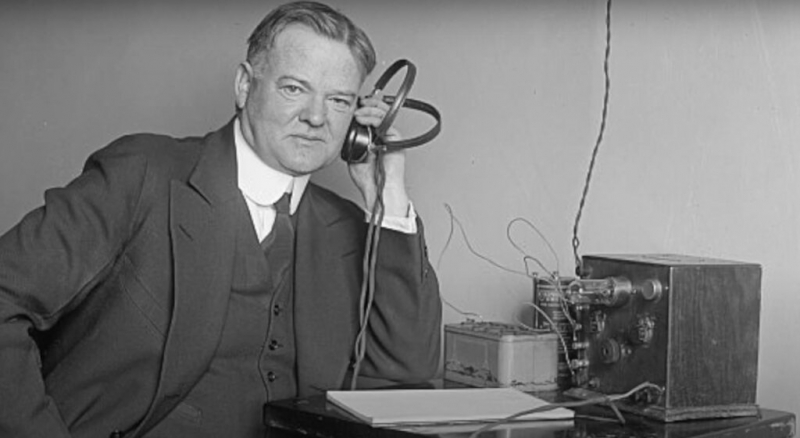
www.cs.mcgill.ca KKD1247 - youtube.com -
Hoover briefly ran for president in 1920, although he never gave his express consent or took part in the campaign. Hoover, who was essentially nonpartisan, ran for office in California primarily on the topic of joining the League of Nations, which his fellow Progressive Republican rival Hiram Johnson passionately opposed. Hoover dropped out of the campaign when Johnson won the California primary. After serving as Harding's secretary of commerce for seven years, Hoover decided to run for president once more.
Although Hoover once said "the whole idea" of a political campaign filled him "with complete revulsion," his national popularity peaked after he oversaw relief efforts after flooding along the Mississippi River in 1927. As a result, when Coolidge announced he wouldn't run for reelection, Hoover emerged as the front-runner for the Republican nomination.
Hoover had won enough primaries by the time of the Republican convention in Kansas City in the summer of 1928, despite the party leadership's lack of complete confidence in him, to win the support of several constituencies and the crucial endorsement of Treasury Secretary Andrew Mellon. With 444 electoral votes to Alfred E. Smith's 87 and 58 percent of the popular vote, he handily beat Smith in the general election.
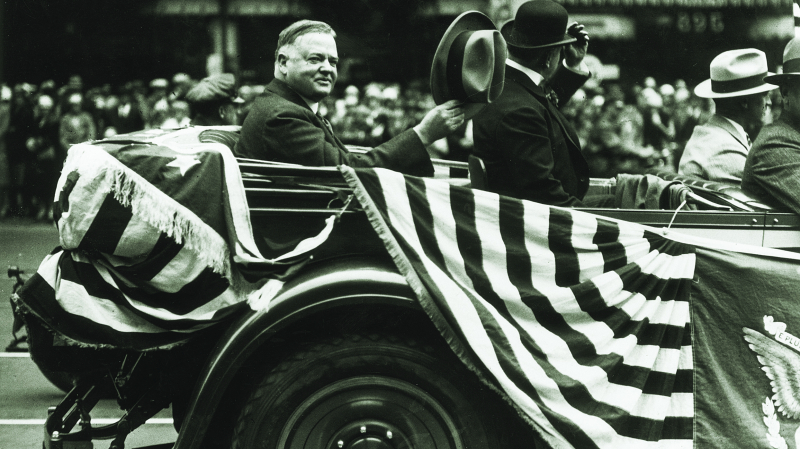
www.biography.com 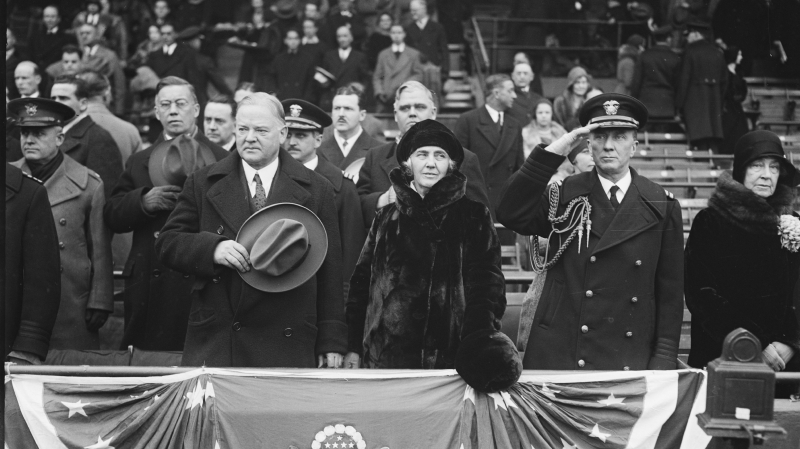
www.biography.com -
One of the interesting facts about Herbert Hoover is he failed to defeat FDR and became to be one of his worst critics. Because Hoover assumed office just a few months before the 1929 stock market crisis, historians have criticized his bad timing and presidential actions. Even the Great Engineer was unable to devise a plan to revive the economy. His voluntary, non-governmental approach to economics failed to increase demand and production, the Hawley-Smoot Tariff law was ineffective, the Agricultural Marketing Act had little effect, and the Reconstruction Finance Corporation failed to stabilize the banking system. Franklin Delano Roosevelt defeated Herbert Hoover with 57 percent of the popular vote and a massive 472-59 electoral vote advantage after the public rallied behind him and his New Deal pledges.
Hoover disliked being blamed for the Great Depression and criticized the ideologies and actions of his successor. Hoover thought Roosevelt had personally insulted him as well. Hoover's request for Secret Service protection was turned down, and he thought FDR had obstructed his fundraising efforts for Finland's war against Russia by spreading unfavorable reports to the media.
Many of Hoover's digs at Roosevelt haven't held up over time. The "gospel of tyranny" that surrounded the New Deal's backing was the focus of his greatest complaints. The fact that "this Administration is progressively creating the same development of personal power that has swept the globe into Nazism and Fascism" was one of the many comparisons he made between what was occurring in America and what was happening in Europe.
However, Hoover's thoughts extended beyond politics. He maintained his charitable activities while also producing a large body of writing, including The Ordeal of Woodrow Wilson, the first presidential biography written by a different author, and Fishing for Fun-And to Wash Your Soul. Before he passed away in New York on October 20, 1964, at the age of 90, he also contributed to the efforts of post-World War II rehabilitation in Europe.
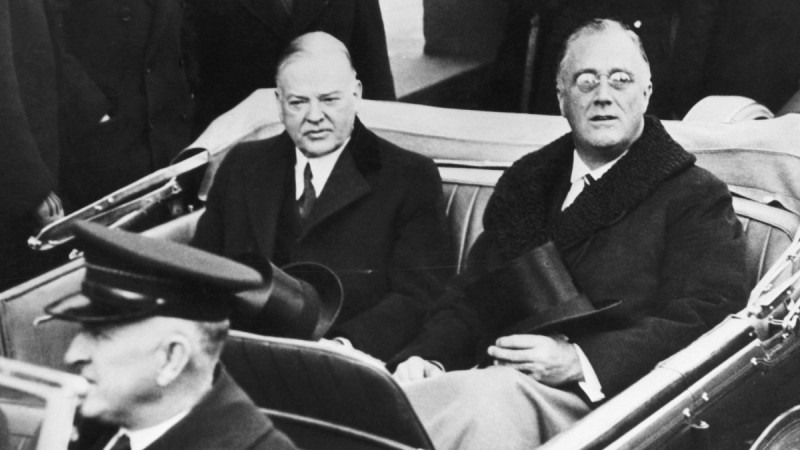
Herbert Hoover and Franklin D. Roosevelt - uk.usembassy.gov 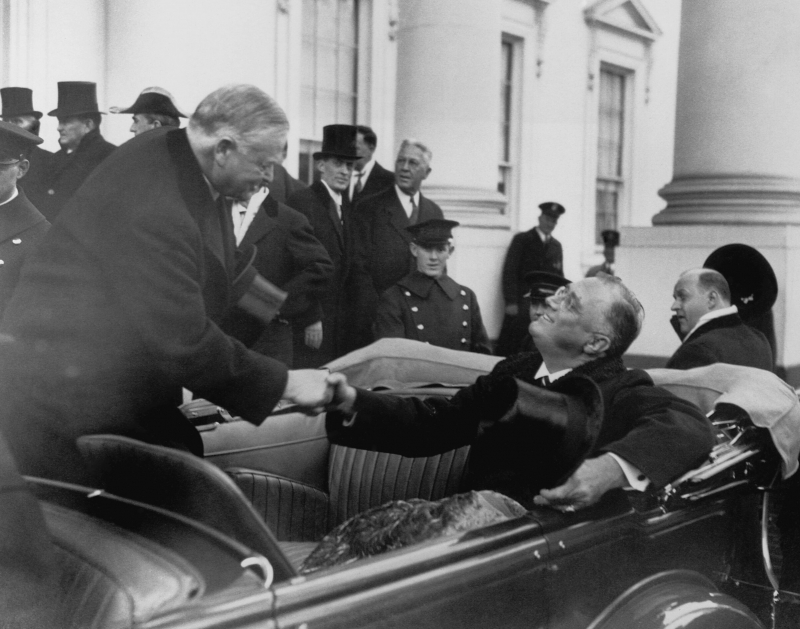
uk.usembassy.gov -
Hoover visited with White House physician Joel T. Boone for a routine checkup soon after taking office. With two notable exceptions, Boone, who had previously worked for Presidents Harding and Coolidge, said that Hoover's health was generally excellent. Hoover was obese, and a chest expansion test revealed that his lung function wasn't at its best. This discovery did not surprise the doctor because Hoover was a 54-year-old desk-bound bureaucrat who liked eating and smoking cigars. Boone suggested that Hoover follow a low-calorie diet to shed 25 pounds and work on his lungs by doing deep breathing exercises outside.
Hoover and Boone had a lengthy conversation on the nature of this outdoor workout. Hoover yearned for something to energize both his body and intellect. He didn't have the time to stroll or ride a horse, nor did he have the patience for calisthenics. Throwing an eight-pound medicine ball back and forth was Boone's suggestion. While on their South American trip following the election, Hoover and Boone had observed sailors kicking the ball about. The sailors' game, known as "bull in the ring," was quite similar to keep-away. Each morning for thirty minutes, Hoover, Boone, and a few other men gathered on the White House's south lawn to toss the leather ball.
This workout quickly becomes monotonous. Boone changed the situation such that it was more like a game and less like a setup exercise. The activity stressed muscles, lungs, and nerves as it combined volleyball and tennis. The contest took place on a grass tennis court that had an eight-foot-tall volleyball net dividing it. Six-pound balls were tossed over the net by teams of two to four men, who would then score points like in tennis. The game required intense cardiovascular exercise since it moved so quickly. Men would engage in a game while replacing as necessary to catch their breath.
The sport, which a New York Times reporter dubbed "Hooverball" in 1931, was played on a court resembling tennis and scored similarly with the difference that the ball was tossed rather than hit with a racket. According to Hoover's memoirs, "it needed less skill than tennis, was quicker and more intense, and so delivered more exercise in a short period." In Hoover's hometown of West Branch, Iowa, a national Hooverball tournament is conducted each year.

hoover.blogs.archives.gov 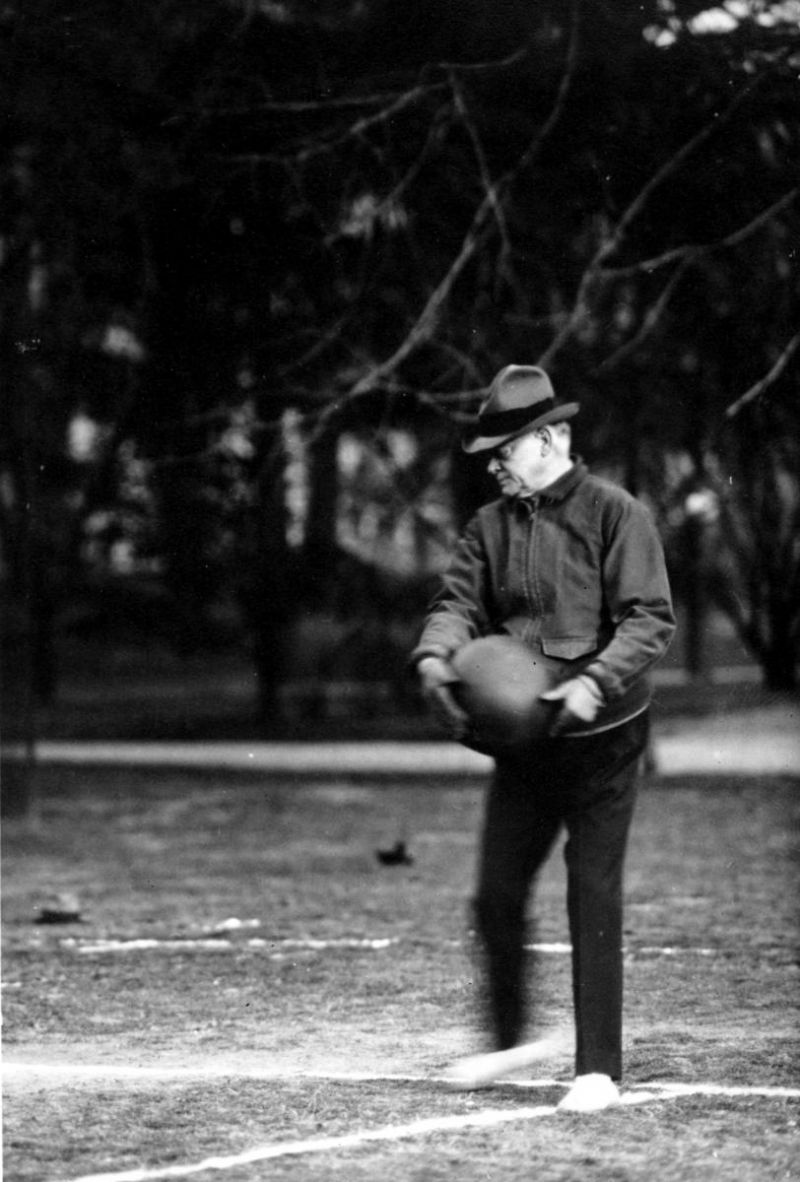
hoover.blogs.archives.gov
































